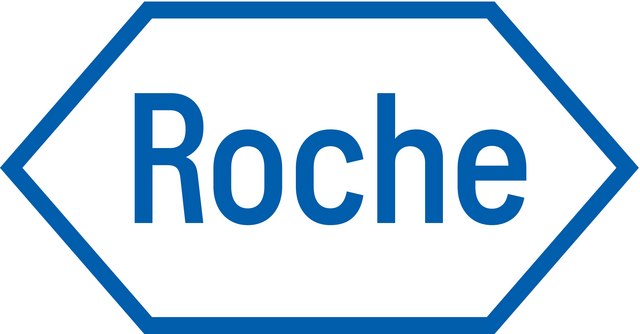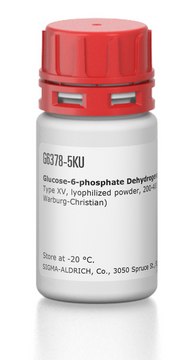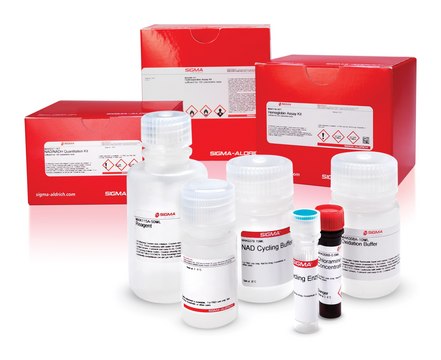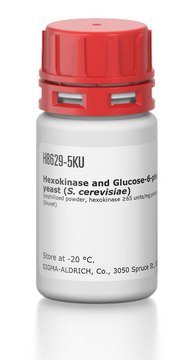G5760
Glucose-6-phosphate Dehydrogenase from Leuconostoc mesenteroides
Type XXIII, ammonium sulfate suspension, 550-1,100 units/mg protein (biuret), ≥2.0 mg/mL Biuret
Synonym(s):
G-6-P-DH
Sign Into View Organizational & Contract Pricing
All Photos(1)
About This Item
Recommended Products
biological source
bacterial (Leuconostoc mesenteroides)
Quality Level
type
Type XXIII
form
ammonium sulfate suspension
specific activity
550-1,100 units/mg protein (biuret)
mol wt
54 kDa
concentration
≥2.0 mg/mL Biuret
foreign activity
6-Phosphogluconic dehydrogenase, hexokinase, NADH oxidase and NADPH oxidase ≤0.005%
PGI ≤0.01%
storage temp.
2-8°C
Looking for similar products? Visit Product Comparison Guide
Related Categories
General description
Research area: Cell Signaling
Glucose-6-phosphate dehydrogenase (G6PD) is found in the cytoplasm of all cells. The G6PD enzyme is encoded by the Gd gene, located on the long arm of the X chromosome.Glucose-6-phosphate Dehydrogenase (G6PD) from Leuconostoc mesenteroides catalyzes the oxidation of glucose 6-phosphate in the presence of nicotinamide adenine dinucleotide (NAD+) or nicotinamide adenine dinucleotide phosphate (NADP+). It corresponds to a molecular weight of 54 kDa and exists as a homodimer.
Glucose-6-phosphate dehydrogenase (G6PD) is found in the cytoplasm of all cells. The G6PD enzyme is encoded by the Gd gene, located on the long arm of the X chromosome.Glucose-6-phosphate Dehydrogenase (G6PD) from Leuconostoc mesenteroides catalyzes the oxidation of glucose 6-phosphate in the presence of nicotinamide adenine dinucleotide (NAD+) or nicotinamide adenine dinucleotide phosphate (NADP+). It corresponds to a molecular weight of 54 kDa and exists as a homodimer.
Application
Glucose-6-phosphate Dehydrogenase from Leuconostoc mesenteroides has been used:
- as a component of reaction mixture for assaying mannose- and glucose-6-phosphate activity
- as a component of reaction mixture in the nevirapine inhibition studies in human hepatic microsomes
- in the glucose-phosphorylating activity of chloroplast extracts
- as a model to test the effect of seed protein fractions on enzyme protection during dehydration.
- in assays for nicotinamide adenine dinucleotide and tissue pyridine nucleotides.
Biochem/physiol Actions
Glucose-6-phosphate dehydrogenase (G6PD) catalyzes the conversion of glucose-6-phosphate to 6-phosphogluconolacetone as the first step in the pentose phosphate pathway.
Glucose-6-phosphate dehydrogenase (G6PD) is a housekeeping enzyme that protects cells from damage caused by reactive oxygen species by supplying substrates that help prevent oxidative harm. G6PD from Leuconostoc mesenteroides catalyzes the oxidation of glucose 6-phosphate in the presence of nicotinamide adenine dinucleotide (NAD+) or nicotinamide adenine dinucleotide phosphate (NADP+) as the first step in the pentose phosphate pathway. Lysine 21 in the Glucose-6-phosphate Dehydrogenase (G6PD) is crucial for binding NAD+. G6PD uses NAD+ or NADP+ based on the catabolic or anabolic metabolic pathway.G6PD deficiency can lead to acute hemolysis, neonatal jaundice, or severe chronic non-spherocytic hemolytic anemia.
Unit Definition
One unit will oxidize 1.0 μmole of D-glucose 6-phosphate to 6-phospho-D-gluconate per min in the presence of NAD at pH 7.8 at 30 °C.
Physical form
Suspension in 2.7 M (NH4)2SO4 solution containing 42 mM Tris and 0.8 mM MgCl2
Signal Word
Danger
Hazard Statements
Precautionary Statements
Hazard Classifications
Resp. Sens. 1
Storage Class Code
11 - Combustible Solids
WGK
WGK 3
Flash Point(F)
Not applicable
Flash Point(C)
Not applicable
Personal Protective Equipment
dust mask type N95 (US), Eyeshields, Gloves
Choose from one of the most recent versions:
Already Own This Product?
Find documentation for the products that you have recently purchased in the Document Library.
Customers Also Viewed
Our team of scientists has experience in all areas of research including Life Science, Material Science, Chemical Synthesis, Chromatography, Analytical and many others.
Contact Technical Service









